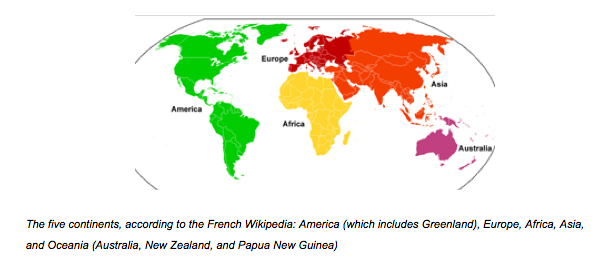Did you learn about Mrs Gren at school? She was a useful person to know when you wanted to remember that Movement, Respiration, Sensation, Growth, Reproduction, Excretion, and Nutrition were the defining signs of life. But did you ever wonder how accurate this classroom mnemonic really is, or where it comes from?
The post What is life? appeared first on OUPblog.
By Dennis Baron
Everybody knows that a noun is the name of a person, place, or thing. It’s one of those undeniable facts of daily life, a fact we seldom question until we meet up with a case that doesn’t quite fit the way we’re used to viewing things.
That’s exactly what happened to a student in Ohio when his English teacher decided to play the noun game. To the teacher, the noun game seemed a fun way to take the drudgery out of grammar. To the student it forced a metaphysical crisis. To me it shows what happens when cultures clash and children get lost in the tyranny of school. That’s a lot to get from a grammar game.
Anyway, here’s how you play. Every student gets a set of cards with nouns written on them. At the front of the classroom are three buckets, labeled “person,” “place,” and “thing.” The students take turns sorting their cards into the appropriate buckets. “Book” goes in the thing bucket. “city” goes in the place bucket. “Gandhi” goes in the person bucket.
Ganesh had a card with “horse” on it. Ganesh isn’t his real name, by the way. It’s actually my cousin’s name, so I’m going to use it here.
You might guess from his name that Ganesh is South Asian. In India, where he had been in school before coming to Ohio, Ganesh was taught that a noun named a person, place, thing, or animal. If he played the noun game in India he’d have four buckets and there would be no problem deciding what to do with “horse.” But in Ohio Ganesh had only three buckets, and it wasn’t clear to him which one he should put “horse” in.
In India, Ganesh’s religion taught him that all forms of life are continuous, interrelated parts of the universal plan. So when he surveyed the three buckets it never occurred to him that a horse, a living creature, could be a thing. He knew that horses weren’t people, but they had more in common with people than with places or things. Forced to choose, Ganesh put the horse card in the person bucket.
Blapp! Wrong! You lose. The teacher shook her head, and Ganesh sat down, mortified, with a C for his efforts. This was a game where you got a grade, and a C for a child from a South Asian family of overachievers is a disgrace. So his parents went to talk to the teacher.
It so happens that I’ve been in a similar situation. We spent a year in France some time back, and my oldest daughter did sixth grade in a French school. The teacher asked her, “How many continents are there?” and she replied, as she had been taught in the good old U.S. of A., “seven.” Blaap! Wrong! It turns out that in France there are only five.
So old dad goes to talk to the teacher about this. I may not be able to remember the seven dwarfs, but I rattled off Europe, Asia, Africa, Australia, Antarctica, North America, and South America. The teacher calmly walked me over to the map of the world. Couldn’t I see that Antarctica was an uninhabited island? And couldn’t I see that North and South America were connected? Any fool could see as much.
At that point I decided not to press the observation that Europe and Asia were also connected. Some things are not worth fighting for when you’re fighting your child’s teacher.




